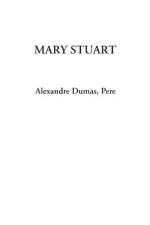As to the second obstacle, that of the violence used to the queen, Mary undertook to remove it herself; for, being brought before the court, she declared that not only did she pardon Bothwell for his conduct as regarded her, but further that, knowing him to be a good and faithful subject, she intended raising him immediately to new honours. In fact, some days afterwards she created him Duke of Orkney, and on the 15th of the same month—that is to say, scarcely four months after the death of Darnley—with levity that resembled madness, Mary, who had petitioned for a dispensation to wed a Catholic prince, her cousin in the third degree, married Bothwell, a Protestant upstart, who, his divorce notwithstanding, was still bigamous, and who thus found himself in the position of having four wives living, including the queen.
The wedding was dismal, as became a festival under such outrageous auspices. Morton, Maitland, and some base flatterers of Bothwell alone were present at it. The French ambassador, although he was a creature of the House of Guise, to which the queen belonged, refused to attend it.
Mary’s delusion was short-lived: scarcely was she in Bothwell’s power than she saw what a master she had given herself. Gross, unfeeling, and violent, he seemed chosen by Providence to avenge the faults of which he had been the instigator or the accomplice. Soon his fits of passion reached such a point, that one day, no longer able to endure them, Mary seized a dagger from Erskine, who was present with Melville at one of these scenes, and would have struck herself, saying that she would rather die than continue living unhappily as she did; yet, inexplicable as it seems, in spite of these miseries, renewed without ceasing, Mary, forgetting that she was wife and queen, tender and submissive as a child, was always the first to be reconciled with Bothwell.
Nevertheless, these public scenes gave a pretext to the nobles, who only sought an opportunity for an outbreak. The Earl of Mar, the young prince’s tutor, Argyll, Athol, Glencairn, Lindley, Boyd, and even Morton and Maitland themselves, those eternal accomplices of Bothwell, rose, they said, to avenge the death of the king, and to draw the son from hands which had killed the father and which were keeping the mother captive. As to Murray, he had kept completely in the background during all the last events; he was in the county of Fife when the king was assassinated, and three days before the trial of Bothwell he had asked and obtained from his sister permission to take a journey on the Continent.
The insurrection took place in such a prompt and instantaneous manner, that the Confederate lords, whose plan was to surprise and seize both Mary and Bothwell, thought they would succeed at the first attempt.
The king and queen were at table with Lord Borthwick, who was entertaining them, when suddenly it was announced that a large body of armed men was surrounding the castle: Bothwell and Mary suspected that they were aimed at, and as they had no means of resistance, Bothwell dressed himself as a squire, Mary as a page, and both immediately taking horse, escaped by one door just as the Confederates were coming in by the other. The fugitives withdrew to Dunbar.




